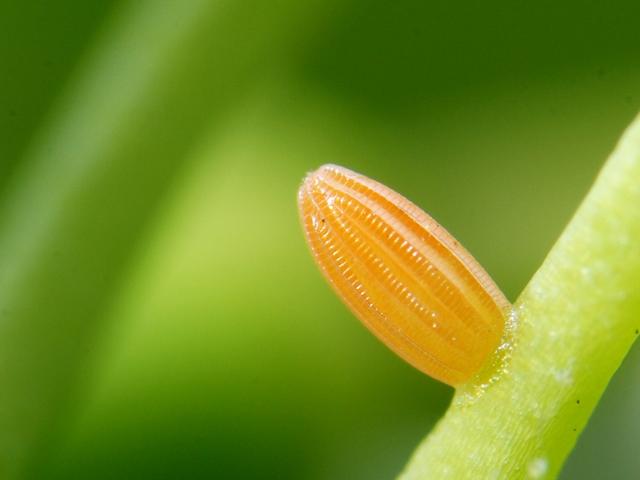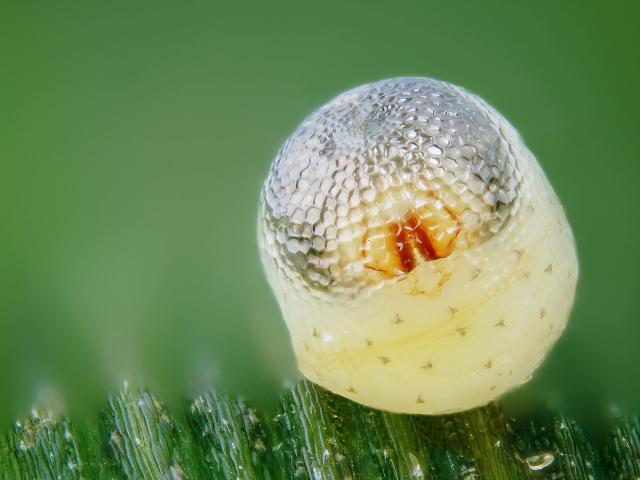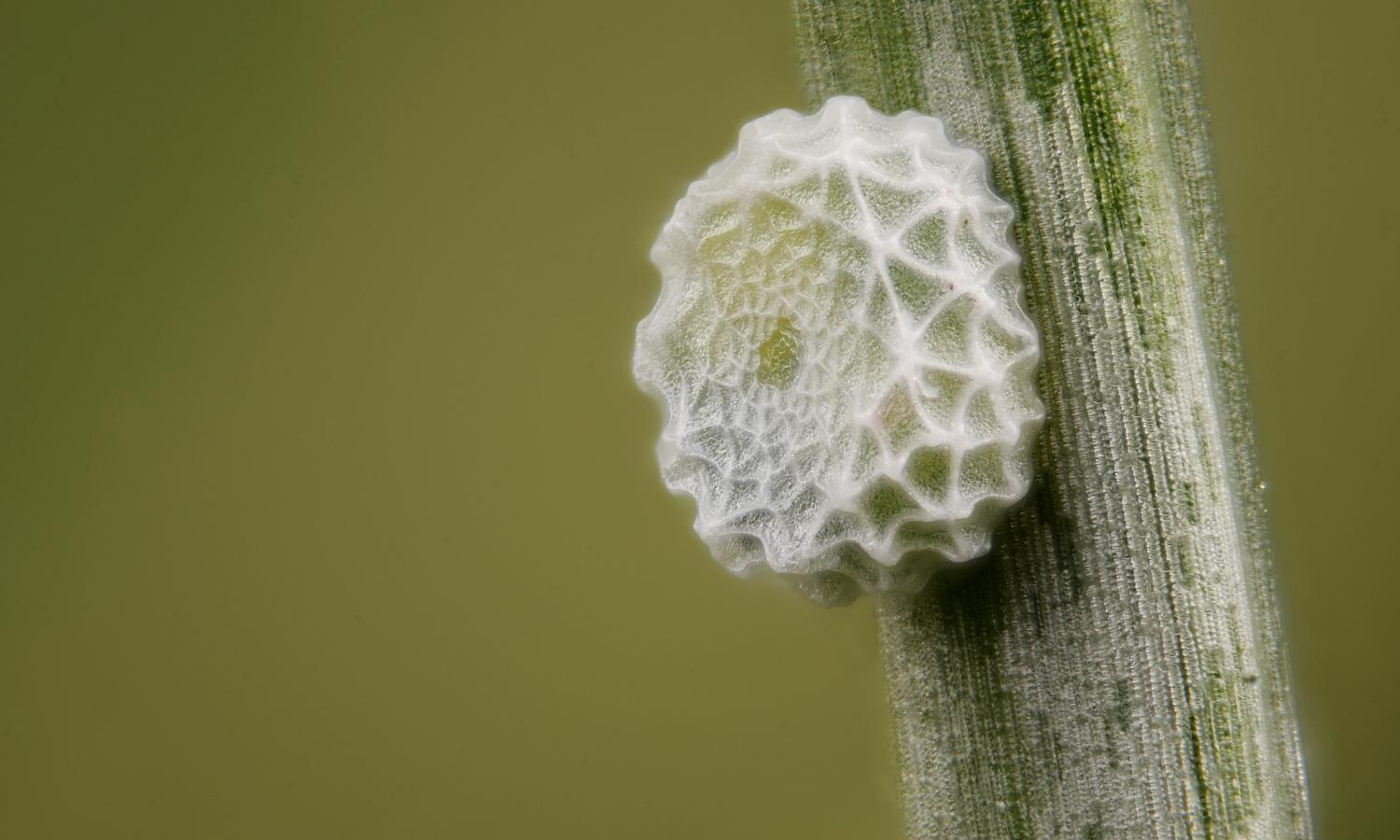Every one of the beautiful butterflies that grace our gardens and countryside during the year began life as an egg. So while butterfly eggs may lack the glamour of adult butterflies, they are an essential part of the life cycle; no eggs, no butterflies.
In a few cases, eggs represent a good opportunity to record the presence of butterfly species. Brown Hairstreak, for example, is elusive as an adult butterfly lurking in the canopy of trees and shrubs, but its tiny white eggs, dimpled like miniature golf balls, are relatively easy to spot against the smooth, dark bark of Blackthorn twigs in the winter. Similarly, vase-shaped Orange-tip eggs are simple to find beneath the flower heads of Cuckooflower and Garlic Mustard in the spring. With a little practise, eggs of Northern Brown Argus and Small Blue can be located on their foodplants, meaning that colonies can be checked even if the weather conditions aren’t good enough for butterflies to be on the wing. And, of course, all keen vegetable growers are familiar with the batches of yellow, skittle-like eggs laid by the Large (‘cabbage’) White.

Aside from these and a few other exceptions, butterfly eggs are overlooked. Perhaps, they are simply too small or too well hidden to be worth searching for. Many are tucked away under leaves, hidden in cracks in tree bark or among leaf litter. Some are camouflaged too, coloured the same as the leaves on which they are placed.
Yet, butterfly eggs are amazing. Unlike in birds and reptiles (and the few egg-laying mammals), butterfly eggs are fully formed, shell and all, within the female before fertilization. Thus each egg must have one or more pores (called micropyles) to allow sperm access through the eggshell. The micropyle is often clearly visible on the top of butterfly eggs – a hand lens or magnifying glass will help.
 The eggshell itself is not mineral based, like that of a chicken, but is constructed from a carbohydrate chemical called chitin, which is also a major component of the outer skin (exoskeleton) of caterpillars and adult butterflies. Typically the eggshell has a series of ridges, giving it a ribbed appearance, but those of Lycaenid butterflies (i.e. the blues, coppers and hairstreaks) are often intricately patterned; well worth a look under a microscope if you have one.
The eggshell itself is not mineral based, like that of a chicken, but is constructed from a carbohydrate chemical called chitin, which is also a major component of the outer skin (exoskeleton) of caterpillars and adult butterflies. Typically the eggshell has a series of ridges, giving it a ribbed appearance, but those of Lycaenid butterflies (i.e. the blues, coppers and hairstreaks) are often intricately patterned; well worth a look under a microscope if you have one.
They vary greatly in overall shape too, from the tall, elongated eggs of the whites, through various ovoid (e.g. Comma), spherical (e.g. Swallowtail), dome-like (e.g. Silver-spotted Skipper) and flattened-spheres (e.g. Holly Blue), to almost rectangular (e.g. Small Skipper). Eggs may be laid singly or in groups of up to several hundred, in neat rows (e.g. Large White) or haphazard piles (e.g. Peacock). The European Map, which occurs widely in continental Europe but is not native to the UK, even lays its eggs in strings, dangling below nettle leaves.
Inside the eggs, the fertilised embryo develops into a caterpillar using nutrients from a rich yolk fluid. Once ready to hatch, the tiny caterpillar bites its

way out of the egg and then typically eats part or all of the shell. This seems to be an important first meal in many species, without which the caterpillar may die. So, in addition, to providing vital protection during development, the egg gets the young caterpillar off to a munching start. Food for thought, as you are tucking into your chocolate Easter egg.
Richard Fox
Head of Recording
Follow me on Twitter: @RichardFoxBC


